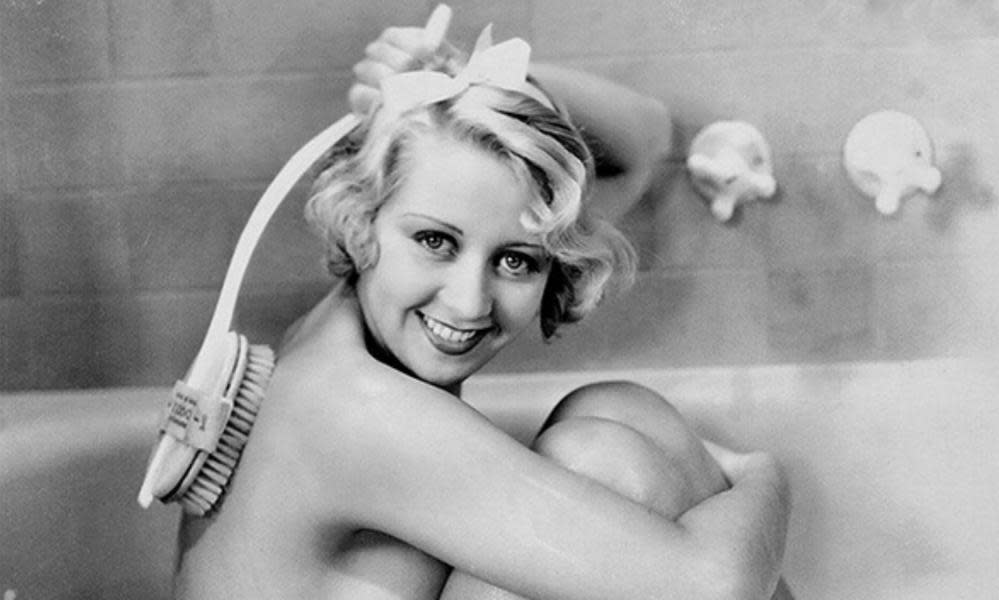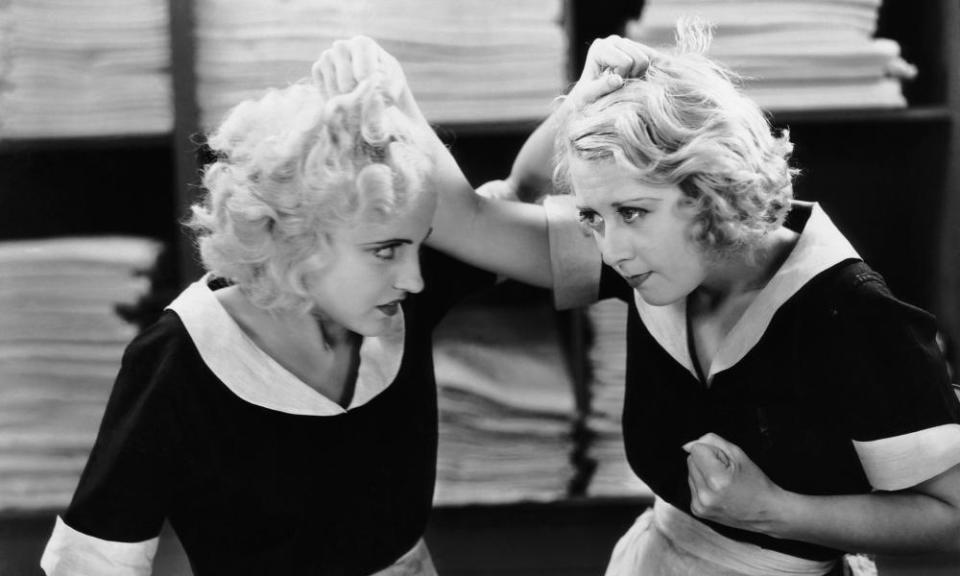‘Two out of five stories should be hot’: why pre-code cinema was a golden age for women

We are all familiar with the limits of the Golden Age Hollywood happy ending: lovers united in marriage, criminals punished, women returned to home and hearth. Once upon a time, the dream factory used to have a much racier imagination. A celebration of pre-Hays Code cinema, subtitled Rules Are Made to Be Broken, launches this month at the Cinema Rediscovered festival in Bristol, recalling the days before conservative censorship held sway over the biggest mass entertainment medium of the 20th century. It was a far more exciting time to be a woman on screen, or in the audience, than we would see for decades.

The trouble started in 1922, when Hollywood was beginning to get a bad reputation. After series of scandals involving A-list stars, the studios hired a redoubtable Presbyterian, William Hays, to banish the “sin city” image. Hays had plenty of ideas about what should and should not be allowed on screen – he called it the “formula” – but it was another job getting the studios to play along. By 1929, the Catholic editor of Motion Picture Herald and a Jesuit priest were so incensed by the persistent inclusion of inappropriate material that they submitted a “code” of rules to the studios that would ensure that in any film “throughout, the audience feels sure that evil is wrong and good is right”.
Adultery was not to be glamorised, authority figures were to be respected and crime was to be punished, while homosexuality and profanity were off limits and what was called “miscegenation” was outright banned. The studios signed up, keener on self-censorship than fighting battles with local censors state by state, but enforcement of the code was as feeble as its principles were strict. When German film The Blue Angel, starring Marlene Dietrich as a sultry and domineering cabaret singer, was passed uncut, it set a precedent.
The code wasn’t worth the paper it was written on, and post-prohibition, depression-era audiences clamoured for gangster flicks and risque comedies, as well as socially conscious dramas that reflected the hardscrabble reality of American life. MGM screenwriters worked on the basis that the more outrageous the better, as the cutters couldn’t cut everything. “You would give them five things to take out to satisfy the Hays Office – and you would get away with murder with what they left in,” said one of the studio’s screenwriters, Donald Ogden Stewart. Warner Bros, meanwhile, had an unofficial quota: “Two out of five stories should be hot” and everything was improved by “adding something having to do with ginger”. For five years, Hollywood studios pushed the boundaries of the code to breaking point, until the hammer came down in 1934. A man called Joseph Breen was hired to make the rules really stick and Hollywood’s wild party came to an end.
In pre-code films, women broke society’s moral code, never mind Hollywood’s. It was the era of Mae West’s one-liners and Jean Harlow’s impudent sexual allure. “The kind of women we see in pre-code films are smart. They know how the world works. They know about sex, and they’re mature,” says Dr Lies Lanckman, an expert in Golden Age stardom from the University of Hertfordshire.
Joesph Breen had more influence in standardising world thinking than Mussolini, Hitler, or Stalin
Liberty magazine
They had affairs with handsome but disreputable men, like Norma Shearer’s lustful socialite throwing herself at Clark Gable’s mobster in A Free Soul, or went on flat-out crime sprees, like Joan Blondell in Blonde Crazy with James Cagney, or Kay Francis in Jewel Robbery with William Powell. In two of the era’s most audacious pictures, Jean Harlow and Barbara Stanwyck turned gold-digging into a military stratagem, attempting to sleep their way to the top in Red-Headed Woman and Baby Face.
Elegant Shearer may be best remembered now as Hollywood royalty, due to her marriage to MGM executive Irving Thalberg, but in the pre-code era she was known for her openly hot screen persona. “She was a sort of good girl who did supposedly bad things, but who didn’t acknowledge them as bad at all,” says Lanckman. Shearer played a succession of single women who openly desired sex. That’s the plot of A Free Soul, which Lanckman describes as “a very pure expression of what female sexuality was allowed to be in the pre-code era”. Like the smirking Kay Francis, Shearer had a certain upper-class bearing that allowed her to breeze past disapproval on her way to a good time.
Other stars, such as the bombshell Harlow – who died tragically young after making many of the funniest comedies of the 1930s, plus Red-Headed Woman, a seriously tough melodrama laced with sardonic wit – didn’t have that class advantage. Neither did Blondell, the scene-stealing sidekick in some of the era’s most enjoyable films. Stanwyck was another who had a famously tough upbringing – as Lanckman puts it, “Joseph Breen would censor Barbara Stanwyck’s life.” These actors brought a dangerous edge of realism to pre-code permissiveness.
Stanwyck’s film Baby Face (tagline: “She had it, and made it pay”) was considered by many to be the final straw for pre-code laxity. It caused a commotion even though the censors managed to demand crucial changes before it was released. Stanwyck plays Lily Powers, a young woman exploited from an early age by her father; she takes some advice from a shoemaker who quotes Nietzsche, and decides to turn the tables on the opposite sex. Lily moves to New York City and climbs the corporate ladder one sexual favour at a time. Stanwyck’s performance is breathtaking, as she winds men around her finger with a flutter of her eyelids and a glossily lipsticked smile. One of her early victims is a clerk played by a very young John Wayne, who is utterly crushed by her rejection. Arguably, he should count himself lucky. The censored version tones down the advice from the cobbler and leaves Stanwyck back home and repenting her misdeeds at the finish. It is only recently that Baby Face has been available to view uncut, and to make jaws drop all over again.

Delving into pre-code cinema is like having your Hollywood cake, eating it and licking your lips: here is all the glamour, wit and narrative dynamism of American moviemaking, but with a far more open-minded approach to morality, sexuality and the letter of the law. In this way, these films seem decidedly more modern than the films that followed close behind them. Those beautifully dressed thieves played by Francis and Powell smoke marijuana as they lift jewels from their wealthy victims. The companionship in Baby Face between Stanwyck’s Lily and her maid Chico, played by the wonderful Black actor and singer Theresa Harris, is far more subtly attuned to the differences in their social status and the solidarity that binds them than Hollywood would later allow.
The code was far from neutral. It encapsulated a sexist, homophobic and racist ideology that dominated the industry for decades. Liberty magazine wrote in 1936 that Breen had “more influence in standardising world thinking than Mussolini, Hitler, or Stalin”. At a time when American conservatism is again constraining the lives of women in real life, it is instructive, and wildly entertaining, to look back to a time when we were allowed to dream bigger than a Hollywood happy ending.
• Pre-Code Hollywood: Rules Are Made to Be Broken is curated by writers and critics Pamela Hutchinson and Christina Newland, and will show at Cinema Rediscovered in Bristol, 20 to 24 July, before touring to UK and Ireland venues between August and December.

 Yahoo Movies
Yahoo Movies 
